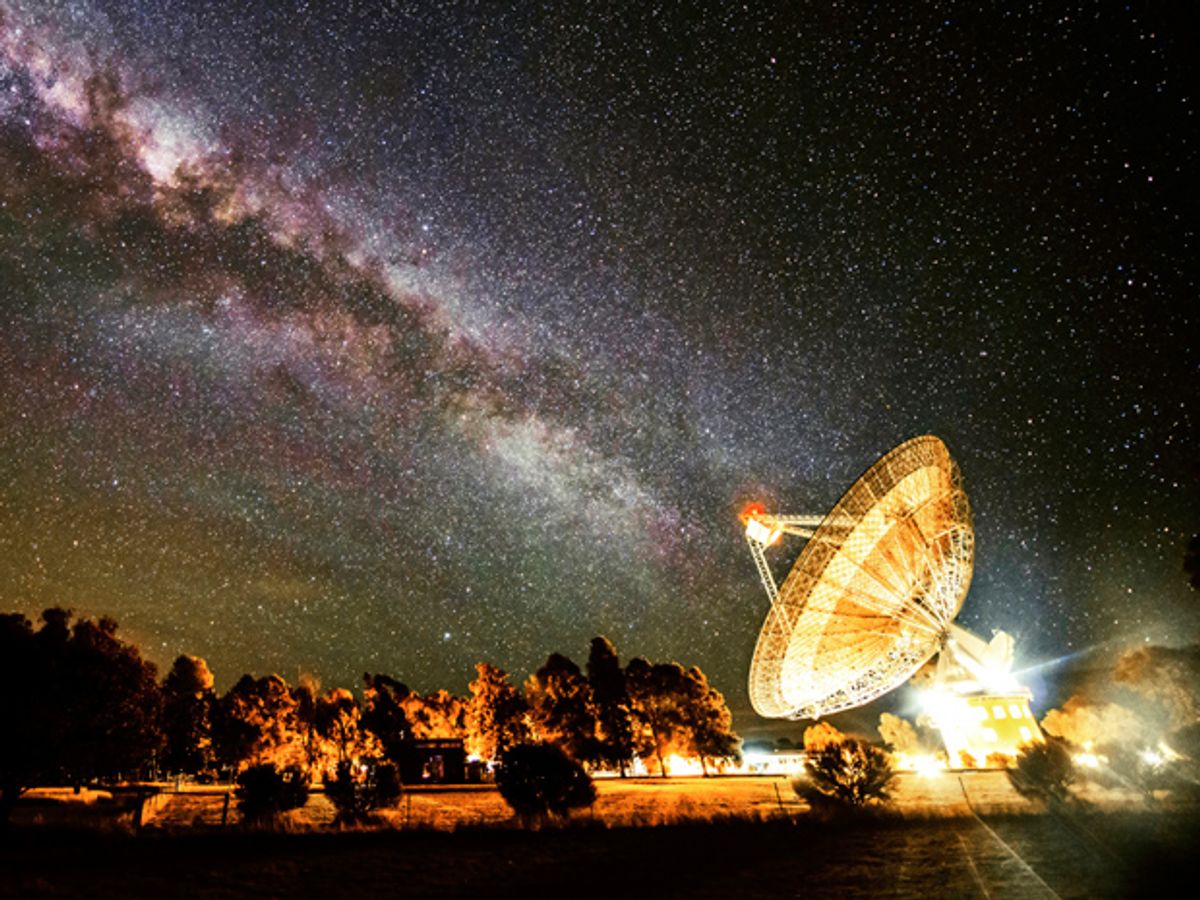Once, during a visit to the Dutch Radio Telescope in Westerbork, the Netherlands, an astronomer told me that they had to shut down the recording of data because a Citroën Deux Cheveaux was standing, with its engine idling, on a small road nearby. The ignition system of the 2CV was pretty primitive; the spark plugs in its two-cylinder engine fired simultaneously, producing a lot of RF noise. Interference from terrestrial sources is a well understood problem for radio telescopes. The announcement of the discovery of pulsars in 1967 was made after all manmade RF signals, such as those emitted by satellites, were ruled out. Because of how vulnerable their tools are to interference, radio astronomers now staunchly defend the frequency bands allocated to them.
In 2007, astronomers at the Parkes Radio Telescope in Australia reported in Science the discovery of a new object in space that caused a single, very intense gigahertz radio burst that lasted only a few milliseconds. The burst, first detected in August 2001, was recognized by scientists during the analysis of archived records. Although the pulse was very short, the higher frequencies arrived first, followed by lower frequencies, indicating that its origin had to be far outside of our Milky Way Galaxy. The astronomers, realizing that this event, called a fast radio burst (FRB), was extraordinary, set out to look for similar events, both in archived records and during new observations. Astronomers identified about 40 FRBs with the Parkes Radio Telescope alone, and other radio astronomers reported similar events.
However, about 25 FRBs detected mainly by the Parkes Radio Telescope and a few other observatories presented signatures that were very different. Although they covered a wide frequency range just like the other FRBs, the frequency-time structures of many of these events defied any physical model, and they did not show differences in the arrival times between the higher frequencies and the lower frequencies of the burst. Also, the location of these FRBs was difficult to pinpoint; the radiation seemed to come from all directions. The Parkes astronomers, mystified, dubbed these "abnormal" FRBs "perythons" after a mythical figure invented by the Argentinian author Jorge Luis Borges. The perythons’ signatures caused astronomers to doubt the extragalactic origin of FRBs [PDF] althogether. They might originate on or nearby Earth, the scientists began to believe, and some astronomers even suggested that these strange bursts might be produced by extraterrestrial civilizations.
Not long after focusing their attention on the perythons, the Parkes astronomers noticed that these FRBs seemed to take off during weekends. In 2014, they installed a radio frequency interference monitor at the observatory and decided that the culprits were probably some microwave ovens inside the observatory building. Tests with these microwave ovens yielded nothing—they emitted no radio pulses while they were running. The astronomers were flummoxed—that is, until one of the testers, during a third attempt, opened the door of a microwave oven before the magnetron was shut off by the timer. They found that although the door shuts the magnetron off, a whiff of gigahertz radiation could escape. Some of the microwaves were nearly three decades old, and the aged magnetrons were prone to sparking during start up and shut down. The researchers wrote in an arXiv paper that this discovery clears up the confusion. Because the perythons are not actually FRBs, but impostors, the previously-identified signatures, the astronomers concluded, are indeed the result of extragalactic events. How the real FRBs are produced still remains a mystery.




